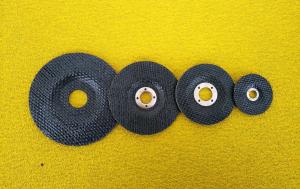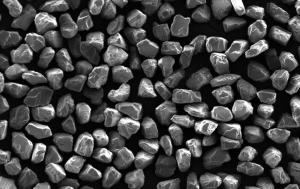Coated Abrasives
1.1 Coated Abrasives
Coated abrasives are available in a variety of forms including sheet, disk, roll, and belt and can be used for a range of applications from very light to heavy duty. A coated abrasive consists of an abrasive held in a backing material by an appropriate bonding medium (Fig. 3). The backing material serves as the base upon which a coating of an adhesive known as the make coat is uniformly applied to anchor a single layer of an abrasive. A typical make coat comprises of a solution containing ∼48% phenol formaldehyde resin and ∼52% calcium carbonate filler. Usually, abrasive grains with a long aspect ratio are specially prepared and used for this application (Fig. 4). Individual abrasive particles are applied uniformly to the “make” coat and oriented by an electrostatic field to maximize the probability that an abrasive will be positioned with its major or long axis perpendicular to the backing material.After the make coat hardens (generally precured for ∼30 minutes at 107 °C), a second coating of adhesive known as the “size” coat (of a similar composition as the make coat) is applied for anchoring the abrasives strongly to the backing material and cured for ∼10 hours at 107 °C. A wide range of abrasives both natural and synthetic is used for coated abrasive applications. They include conventional abrasives such as the various alloys of alumina, sintered sol-gel alumina, SiC, emery, garnet, flint as well as superabrasives, diamond, and cBN. They are available in all grit sizes (36–600) for a wide range of applications. The coated abrasive can be either open-coat abrasive (∼50–70% of its backing surface is covered with the abrasive) for free cutting action or closed-coat (>70%) for obtaining high removal rates.



